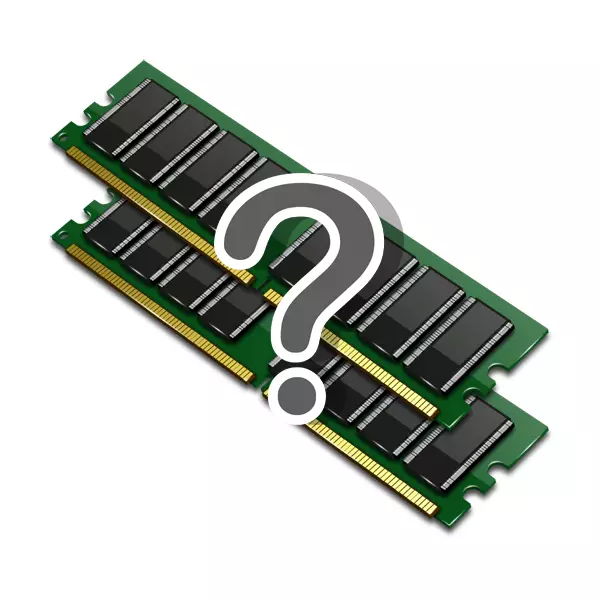
RAM plays an important role in any PC, whether it is a computer or laptop. From how much RAM is on your device, its speed depends. But not every user knows how much memory can use its computer. In today's article we will tell you how to find out the answer to this question.
How to find out how much RAM is installed on the computer
To find out which amount of RAM is on your device, you can use both additional software and standard Windows tools. We will look at various options.Method 1: AIDA64
One of the most famous programs that allows you to view and diagnose all the equipment connected to the computer - AIDA64 Extreme. This is an excellent solution for those who want to know about your PC as much as possible. Also, using this product, you can find out information and about the operating system, installed software, network and third-party connected devices.
Lesson: how to use Aida64
- To find out the amount of connected memory, simply run the program, deploy the Computer tab and click here to the "DMI" item.
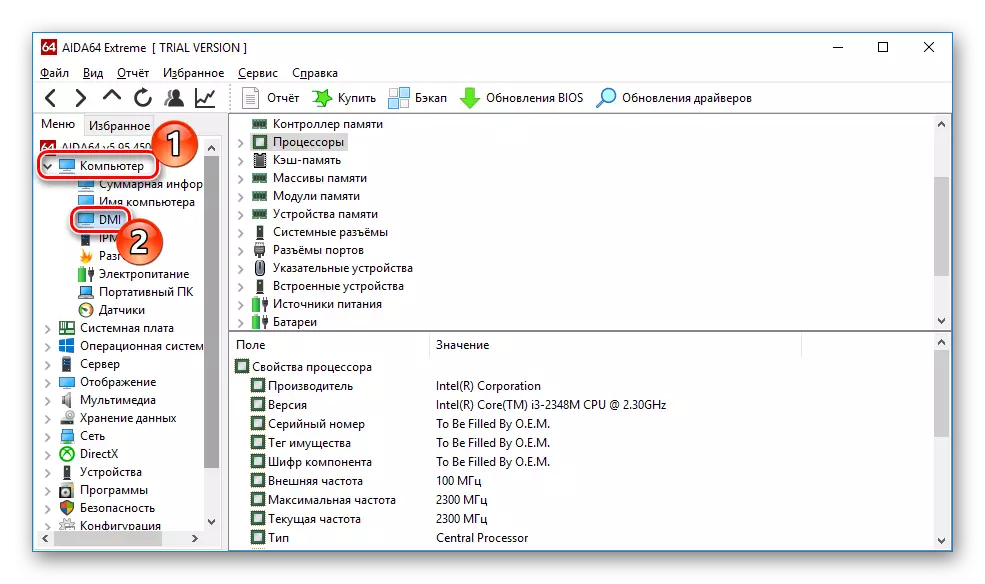
- Then deploy the "Memory Modules" and "Memory Devices" tabs. You will see the RAM bar installed on the PC by clicking on which you can find out more information about the device.
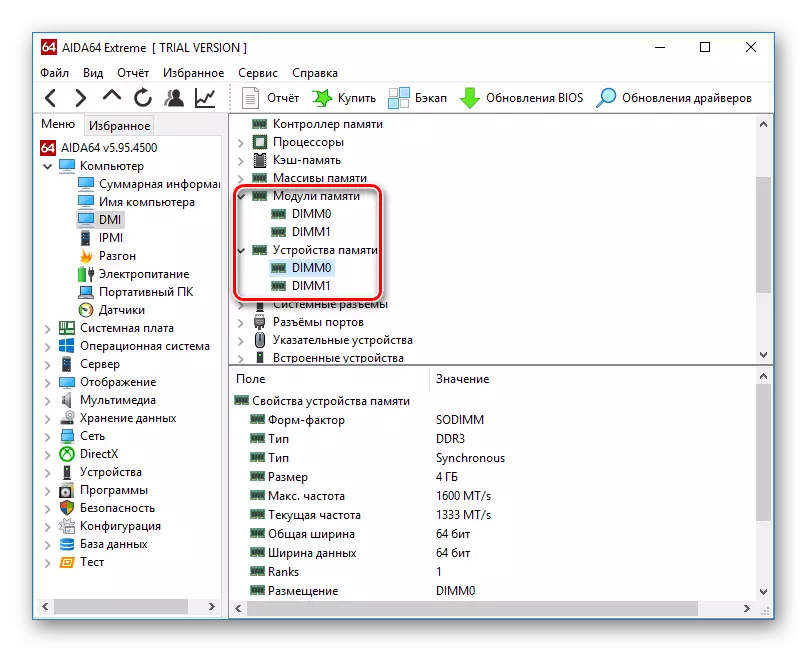
Method 2: Piriform Speccy
Another popular, but already free program to view information about all Hardware and PC software components - Piriform Speccy. It has a pretty simple interface, but at the same time powerful functionality than and deserved the sympathy of users. Using this product, you can also find out the volume of the installed RAM, its type, speed, and much more: just run the program and go to the tab with the appropriate name. A detailed information on the available memory will be presented on the page.
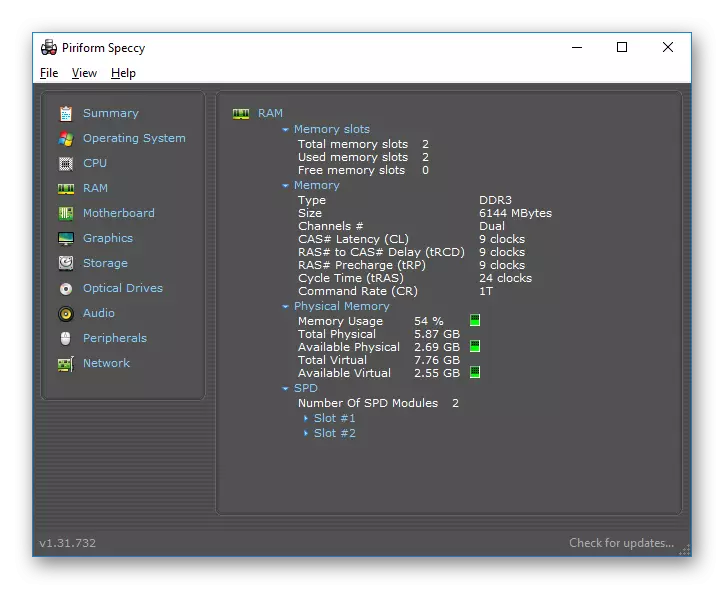
Method 3: View via BIOS
Not the most convenient way, but it also has a place to be viewing characteristics through the BIOS device. For each laptop and computer, ways to enter the specified menu may differ, but the F2 and Delete keys are most often found during PC boot. On our site there is a heading dedicated to the entry methods to the BIOS for various devices:Method 5: Command Line
You can also use the command line and learn more unfolded information about RAM. To do this, run the console through the search (or any other method) and enter the following command there:
WMic Memorychip Get Banklabel, DeviceLocator, Capacity, Speed
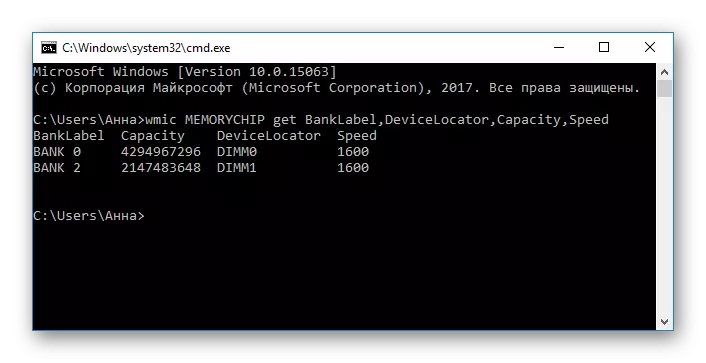
Now consider each parameter Read more:
- Banklabel - here are the connectors to which the corresponding RAM strips are connected;
- Capacity is the amount of memory for the specified bar;
- DeviceLocator - slots;
- Speed is the speed of the corresponding module.
Method 6: "Task Manager"
Finally, even in the "Task Manager" indicates the amount of established memory.
- Call the specified tool using the CTRL + SHIFT + ESC key combination and go to the "Performance tab".
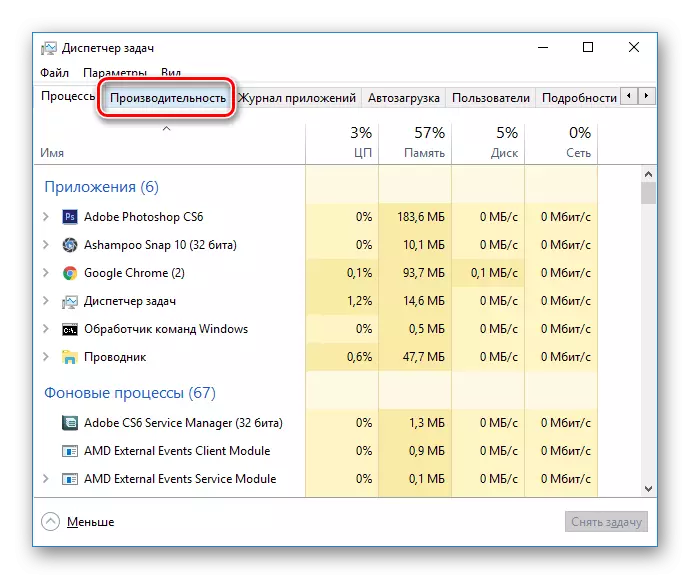
- Then click on the item "Memory".
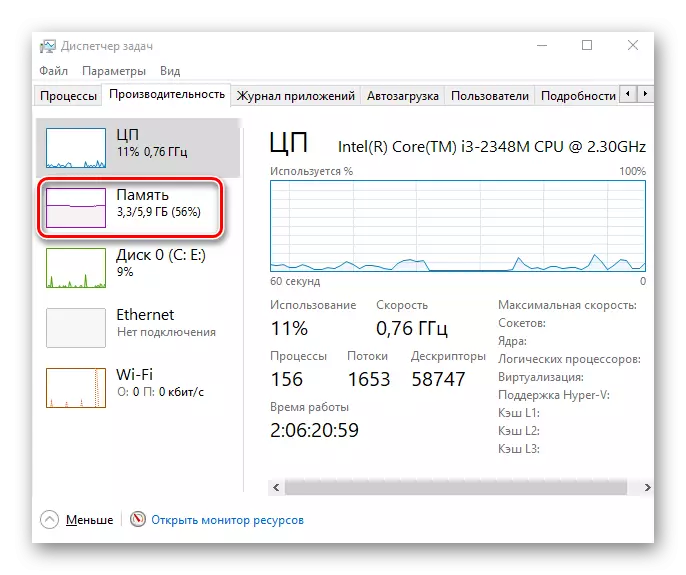
- Here in the corner itself indicated the total number of RAM installed. Also here you can follow the statistics of memory usage, if you are interested.
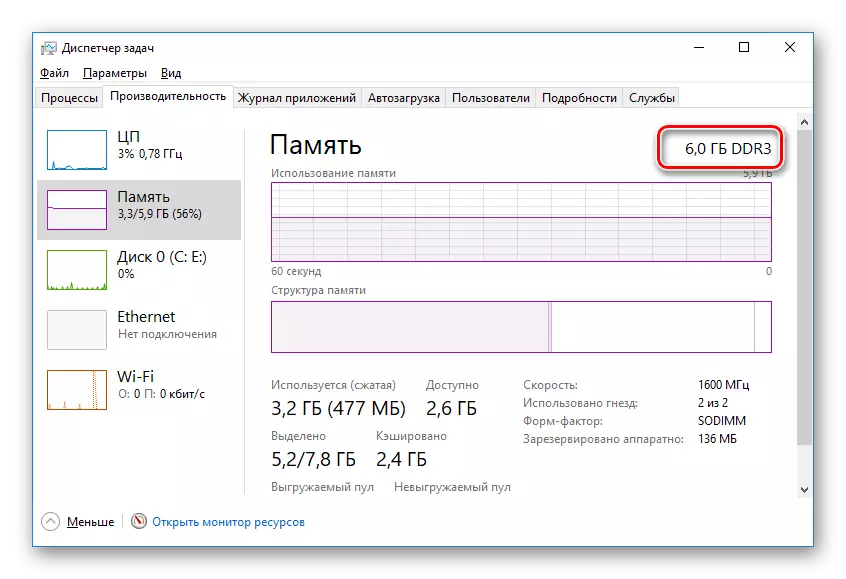
As you can see, all the considered methods are pretty simple and completely under the usual PC user. We hope we helped you deal with this question. Otherwise, write to your questions in the comment and we will definitely answer as soon as possible.
